Eco-minimalism was first introduced in the early 2000s by architect Howard Liddell and his colleague, energy consultant Nick Grant. Their goal was to design and construct eco-friendly buildings.
Eco-minimalism has since evolved to become a lifestyle that aims to use minimalism as a tool to reduce environmental impact.
In this post, we’re going to explore the urgent need for eco-minimalism, how sustainable living and minimalism are different yet incredibly powerful together, and 10 actionable steps to help you become an eco-minimalist starting today.
Let’s get into it.
How overconsumption is ruining our lives and the planet
When I think of our modern world, one word comes to mind. Excess.
If you have the means, you’re likely consuming way more than you need. Even as a minimalist, I’m still guilty of this!
And if you’re not in a place of privilege, the chances are you desire to be in a position where you can consume more than you need.
We believe by wanting and having more things; we’ll feel safer, respected, loved, powerful and happier.
However, what’s the cost of pursuing more things than we need? As it turns out, a lot!
Let’s look at some interesting (and scary) facts about our overconsumption habits.
- The standard American household contains over 300,000 items. That’s a lot of stuff! Meanwhile, clutter has been shown to increase stress and decrease productivity.
- The average British woman purchases 59 articles of clothing each year. She has twice as many clothes when compared to 1980 and has never worn 22 pieces on average. The men are not far behind, with 19 items sitting in their closet, which they’ve never worn.
- Meanwhile, the textile industry is the second largest polluter in the world, only after oil. Fashion hits the environment from many angles, including water pollution, water consumption, plastic, harmful chemicals, greenhouse emissions and deforestation. Oh, and this is on top of all the fair-trade issues.
- It’s predicted that we’ll own 43.9 smartphones in our lifetimes. It’s a new device every 1.8 years. What’s more, each smartphone and its components travel 160,000 miles to get to us. 80% of the carbon footprint happens before even turning on the device.
- Your typical ten-year-old child in the UK has over 200 toys but only plays with 12 daily. The toy industry is the most plastic-intensive industry globally, with 90% of the toys on the planet are made from plastic.
- The size of homes in the U.S. have tripled in size since 1980. Yet, the average household size has decreased by 16% since 1940.
Our unquenchable thirst for more stuff is terrifying – but not without reason.
Coming in and out of cycles of poverty through economic collapse or unfortunate systemic situations drives our scarcity mindsets. The result? We consume resources like there’s no tomorrow. Not seriously. We’ll consume until there really is no tomorrow.
Throw in timely and targeted advertising combined with the aspirational lifestyles driven by social media, and we have an unprecedented psychological challenge to overcome to protect our planet and our mental health.
That’s where eco-minimalism comes into play.
How are eco-living and minimalism different?
Minimalism in isolation is about identifying what is essential in your life and removing the rest. Fundamentally, minimalism is about rejecting excessive consumerism—flipping success on its head from “more is better” to “less is better”.
This means that minimalists generally have fewer items, fewer apps and clearer commitments than your average person.
Minimalists also routinely challenge the idea of succumbing to sales, receiving free things, excessive gift-giving and toxic relationships.
Read more: What is a Minimalist Lifestyle? (And What It’s Not)
As powerful as minimalism can be, the concept alone doesn’t cater for the environment. Here are some examples:
- How frequently does a minimalist replace their things? Even though minimalists generally adopt a “quality over quantity” approach — which in theory should extend the lifecycle of their things — they’re also susceptible to prematurely clearing things to make room for more “quality” items. Sometimes the pursuit of the perfect collection of things results in more harm than good by repeatedly replacing.
- How does a minimalist declutter their things? Minimalists are known for being relatively ruthless when discarding unnecessary things but may not apply the same intentionality to how they get rid of those items. For instance, you can be a minimalist while throwing your unwanted stuff into the trash instead of finding a more eco-friendly path.
- Do minimalists make any attempts to extend the lifespan of their things? A pure minimalist may wear down a good until it no longer sparks joy, then simply replace the item without looking for methods to repair it.
- Do minimalists buy used goods? Sometimes the minimalist aesthetic leans on itself to purchase brand new clothes, decor, technology, vehicles and homewares while often disregarding the option of buying things second-hand as it doesn’t meet the design brief.
- Are minimalists supporting eco-friendly brands? Even if a minimalist is buying high-quality items, they may be supporting brands with unsustainable practices and supply chains.
Now, what about environmentalism?
Environmentalism is about living with the lightest environmental footprint. Environmentalists understand the impact their actions have on the planet’s resources and do their best to reduce that impact.
Sustainable living often boils down to taking the less convenient path than the conventional one, e.g. walking instead of driving, preserving instead of replacing, refilling and topping up instead of buying new.
Read more: 100+ Simple Tips To Live a More Sustainable Lifestyle
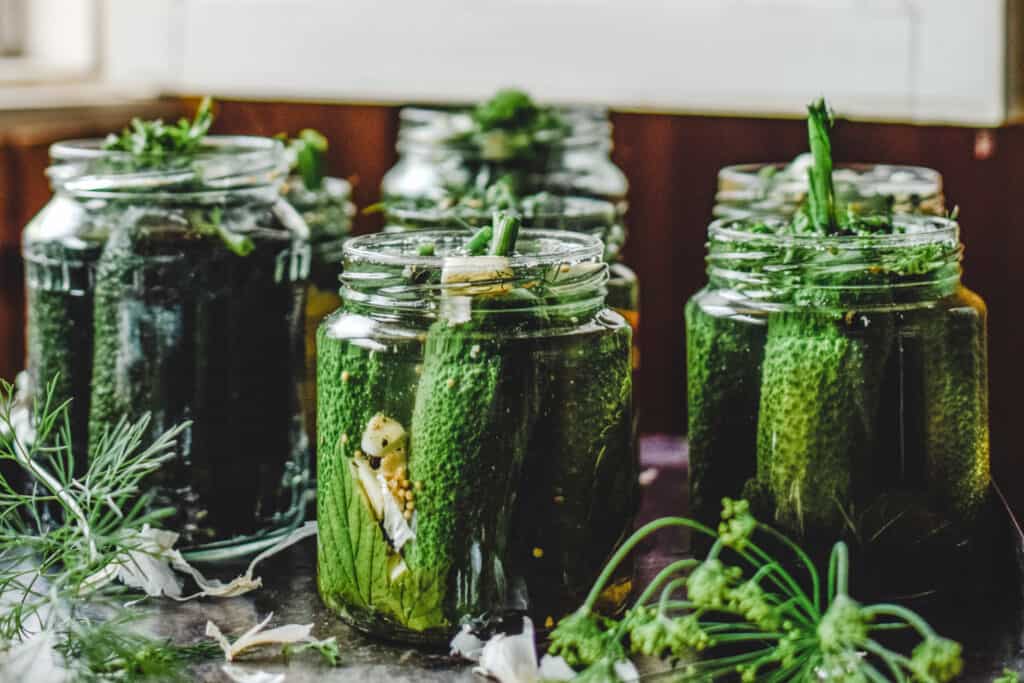
Eco-living in itself is admirable, but the nature of the lifestyle can sometimes lead to both physical and mental clutter. Let’s look at some examples.
- How much does an environmentalist prepare and preserve? One of the most eco-friendly habits an individual can adopt is to source sustainable raw ingredients and prepare food, personal care and cleaning resources from scratch. In the particular case of food, this could mean fermenting and pickling many things—thus creating quite a bit of clutter and a need for extra storage space.
- How many tools do you need to repair your things? Another key pillar of sustainable living is having the skills and tools to fix things. This could mean acquiring or hanging onto equipment just in case it’ll come in handy down the track — leading to more clutter.
- Hanging on to clutter Many environmentalists hang onto things they no longer need because they’re overwhelmed with ensuring each item finds a good home where the life of the thing will be extended. Again, this is admirable, but sometimes at the cost of hanging onto clutter for longer than you need to.
Note that these are generalisations to help illustrate examples. I don’t believe that every minimalist or environmentalist thinks or acts in these ways.
Now that we understand the differences between minimalism and sustainability, we can explore how these two concepts can work together in harmony.
The exciting potential of eco-minimalism
Minimalism provides an approach to reduce excessive consumerism and improve mental health through living with intentionality. But add environmentalism, and now that same minimalist needs to consider the impact of every item that flows into their lives.
Minimalism is about you. Environmentalism is about the planet. It’s the synergy between self-interest and external interest that makes this combination so powerful.
In the next section, we’ll look at how you can practically apply the concepts of eco-minimalism.
10 actions to get started with eco-minimalism
Are you ready to try eco-minimalism? Below are 10 actions you can start today.
1. Own your identity
What’s your why? Your mission? Your values?
If you’re reading this article, you care about the impact of consumerism, so this part should be easy. But don’t gloss over it.
Not to obsess over labels, embracing your identity as an eco-minimalist is a surefire way to own your values and define your North Star. This is essential so you can withstand the daily grind of treading lightly when the world around doesn’t seem to care.
You know what I mean. You’re busting your ass to prepare, limit, reduce and reuse. Yet, you take a step out of your bubble only to witness the sheer volume of waste and clutter seemingly everywhere you turn.
So ask yourself, “why do I want to walk a path of less stuff and less waste?”
Once you have your answer, don’t be afraid to incorporate it as part of your identity. This is not as simple as updating your Instagram profile to “passionate eco-minimalist, doing the best I can.”
No, it means you get to have a mini celebration every time you make a decision that’s aligned with your values. Not to impress others, but do it because you know in your heart it’s the right thing to do.
2. Adopt an eco-friendly approach to decluttering
The difference between a minimalist and an eco-minimalist when it comes to decluttering is the consideration of what they do with discarded items.
Take your typical destination piles for items you no longer deem essential:
- For sale pile
- Giveaway pile
- Donation pile
- Reusable textiles pile
- Rubbish pile
- For scanning pile
- Sentimental pile
- Recycling pile
As an eco-minimalist, you want to have most of your decluttered things go through the for sale pile or giveaway pile.
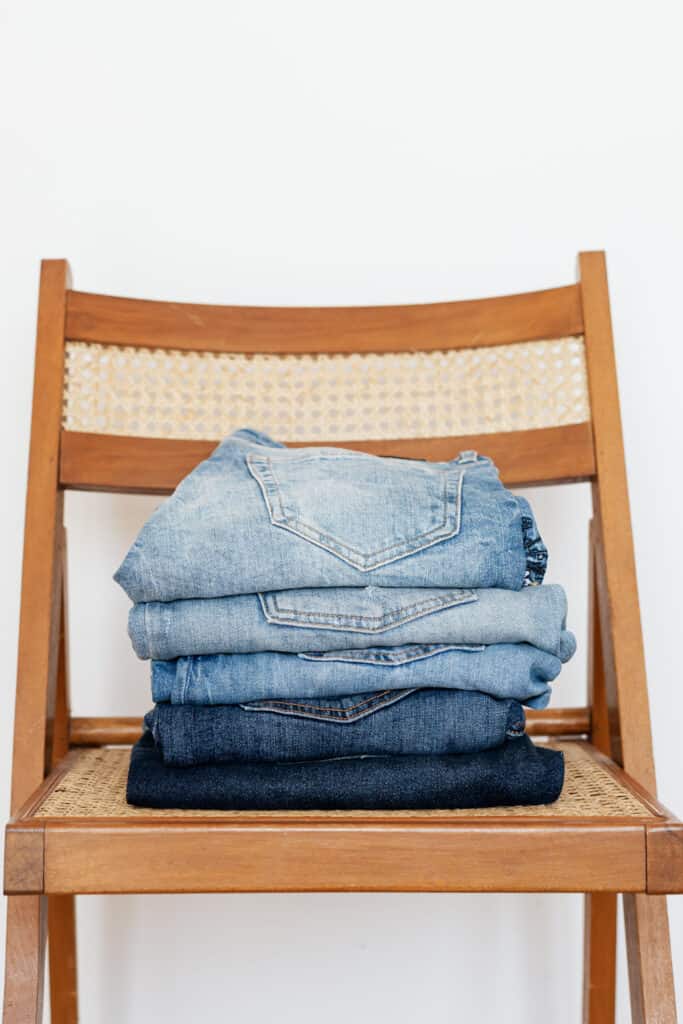
Read more: Minimalist Tips For Decluttering Your Home
Transferring your item to a new owner who has explicitly expressed interest gives the item the best chance of extending its lifespan.
You want to avoid the rubbish pile as much as you can as that leads to waste.
As an eco-minimalist, there are two more destinations you can add to this list; the repair pile and the repurpose pile.
If you’re handy or know someone who is, you could repair and repurpose what would be discarded items and make them essential again.
One caveat. These two paths are most susceptible to procrastination as you need specific skills and time to execute them. If you don’t create urgency to repair and repurpose, these things will become clutter in the form of unfinished projects.
3. Questions to ask at the point of purchase
Minimalists are known to keep wish lists of things they want to buy and take pride in slowing down the purchasing process to ensure they’re obtaining things that add maximum value.
Generally, minimalists are focused on purchasing quality goods that will be consistently used and last a long time.
As an eco-minimalist, the same principles apply, however, with a few tweaks. In addition to performance and longevity, here are some questions to ask:
- How was this item made?
- Where was this item made?
- How is this item packaged?
- What materials or ingredients were used?
- How would I extend the life of this item if I no longer needed it?
We can go on and on with questions, but these are the foundations to help you assess potential purchases without hopefully getting overwhelmed.
The good news is that you’ll find brands that automatically tick your boxes over time, which means you can shop with them with confidence.
4. Define a limit for each storage space in your home
I have much respect for environmentalists who make things from scratch. It’s the most practical method to achieving zero-waste living.
However, having a constant production line of tofu, plant-based cheese, and kombucha requires space and storage.
To keep your environment clutter-free while making things from scratch, see if you can put a limit on each storage space in your home. For example, think of everything you create as a product in a store with allocated shelf space.
By taking the time to define your storage capacities, you can get a better idea of how frequently you need to make things and incorporate that into your schedule and routines.
Read more: 15 Practical Steps To a Zero-Waste Kitchen
5. Leverage community and trade services
Rather than trying to be the jack of all trades to make, repair and preserve everything you own, taking up physical and mental space, you could instead embrace the sharing economy.
For example, if one person on your street grows cucumbers, and you grow tomatoes, then you trade your crops.
The exchange doesn’t have to be in the same category. For instance, our neighbour is an excellent seamstress, so she offers to repair our clothes. While my wife Maša is a fantastic cook and offers her tasty treats.
If you have the access, you could go to your local repair cafe to get appliances fixed while you offer up your particular skill to the community.
Another way to leverage the community is to join buy nothing groups in your area. This is part of the gifting economy, where folks give away things to people who genuinely need them.
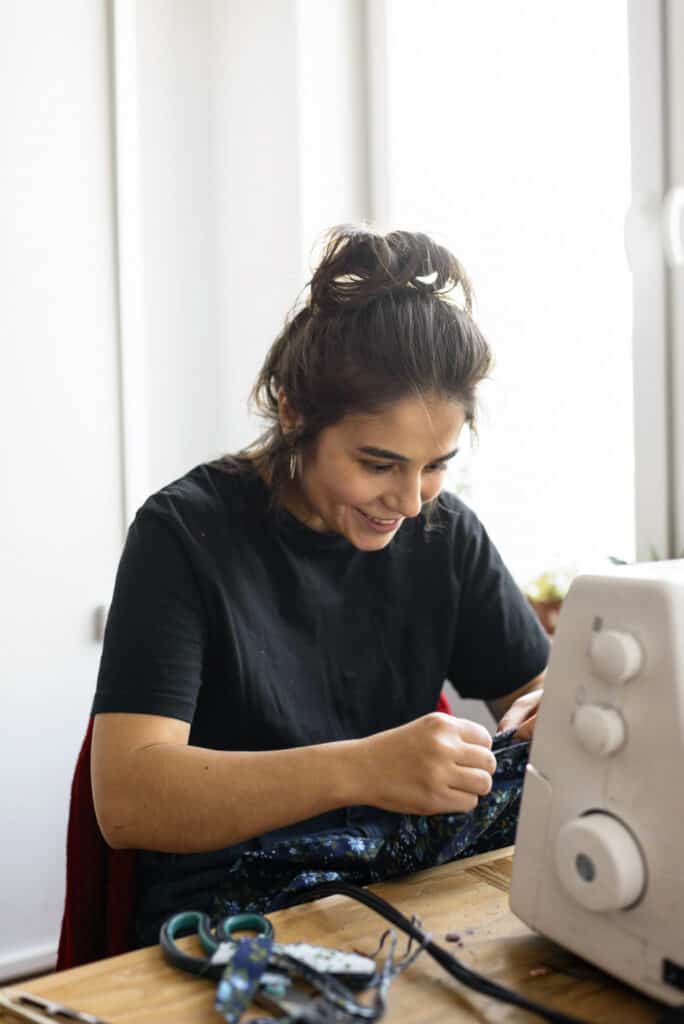
6. Working around family or roommates
One of the greatest challenges as an eco-minimalist is living with others who don’t share the same values.
Eco-minimalism affects how you make decisions throughout each day, so it’s understandable how that would run into conflict with others.
I know how frustrating it is to have a compost bowl out on the kitchen bench only to have a family member walk past and throw a banana peel into the bin.
I suggest you operate on the basis that your family or roommates won’t be on board with your eco-minimalist ways. Set your expectations low. Very low.
I say this to protect your wellbeing and also to accept others, so they feel comfortable around you.
Outside of managing your expectations, here are some suggestions:
- Resist the urge to push or overstep. People rarely respond positively to pushy behaviour.
- Lead by example without showing off. Hopefully, if you’re consistent with your actions, others will start to want to prove they’re making better decisions to impress you.
- Own your space, be it a bedroom, part of a room, a section of a kitchen. Call it micro-minimalism, where you have a small area of the house where it’s completely clutter-free and peaceful.
If you have kids, check out our article on how to be a minimalist family.
7. Take on a buy nothing challenge
Do you know what’s better and easier than trying to figure out how to purchase sustainably made products that don’t suck? I’m not buying anything at all.
A buy nothing challenge is about going for a period, e.g. 3 months or 12 months without buying anything that isn’t a consumable essential like food or personal care.
So starting today, define a timeframe and commit to not buying anything during that period. Even better, do the challenge with a friend to hold each other accountable.
You’ll be surprised how easy it is to go long periods without buying stuff. The best thing is, it ticks both boxes for minimalist and sustainable living.
8. Use minimalism to free up time to participate in eco-friendly activities
One of the most underrated benefits of minimalism is creating time.
By decreasing the number of things you possess, you don’t have to spend as much time cleaning, deciding what to wear or, the worst, trying to find things amongst messy clutter.
By reducing your commitments, you free up some space in your schedule.
By eliminating toxic relationships, you spend less time soaking up negativity and create more time for yourself.
And by removing addictive apps from your phone, you free up time that would otherwise be lost aimlessly browsing social media.
With this extra time, you can finally do the eco-friendly activities you’ve wanted to do, including:
- Going to the farmers market on Saturday mornings
- Visit the library to borrow books on sustainability
- Participating in eco-activism
- Plant trees and native flowers in your area
- Start a vegetable garden
- Walking, cycling or taking public transport instead of driving
- Learn how to use a sewing machine
- Learn how to prepare food from scratch
I could go to one all day, but these are some ideas to get you started.
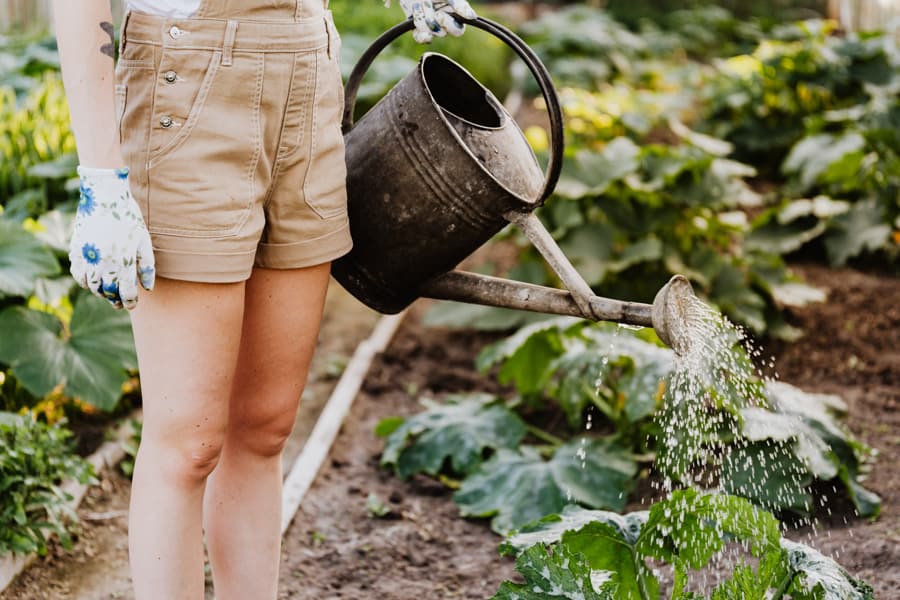
9. Use minimalism to save money and invest in more sustainable goods
Another effective method for practising environmentalism is investing your money in worthy causes. Examples include switching your 401k or portfolio to more ethical funds, supporting sustainable fashion brands, donating to quality non-profits or buying organic food and personal care.
However, there’s no getting around it; sustainable goods and services are a premium and require a bit more cash than usual.
Luckily, minimalism is an excellent tool for creating cash through selling things you no longer need, buying fewer material products or downsizing your place of residence.
10. Don’t beat yourself up
Eco-anxiety is real. Minimalism has its issues as well. Both ideals promote an almost perfectionistic approach, which can send you spiralling into despair if you’re not careful.
Sometimes you’ll impulsively purchase something you want. And sometimes, you forget your bottle when out, and you need to buy bottled water. It’s okay. Eco-minimalism is not about being perfect. It’s about striving to do better.
The hope is that when you leave this earth, you’ve done as little damage to the planet as you could manage, and that’s something to be proud of.
Even if you make 10% better decisions, that’s progress, my friend.
And if you’re a person who makes 80% good decisions as a sustainable minimalist (which is awesome!), please try to refrain from judging or shaming others who are learning and trying.
Become an eco-friendly minimalist
I believe that eco-minimalism has the power to make an incredibly positive impact on our lives and the planet. I hope this concept continues to pick up steam and reach the mainstream.
Are you an aspiring eco-minimalist? What have you learned about your experience so far? Let me know in the comments below.

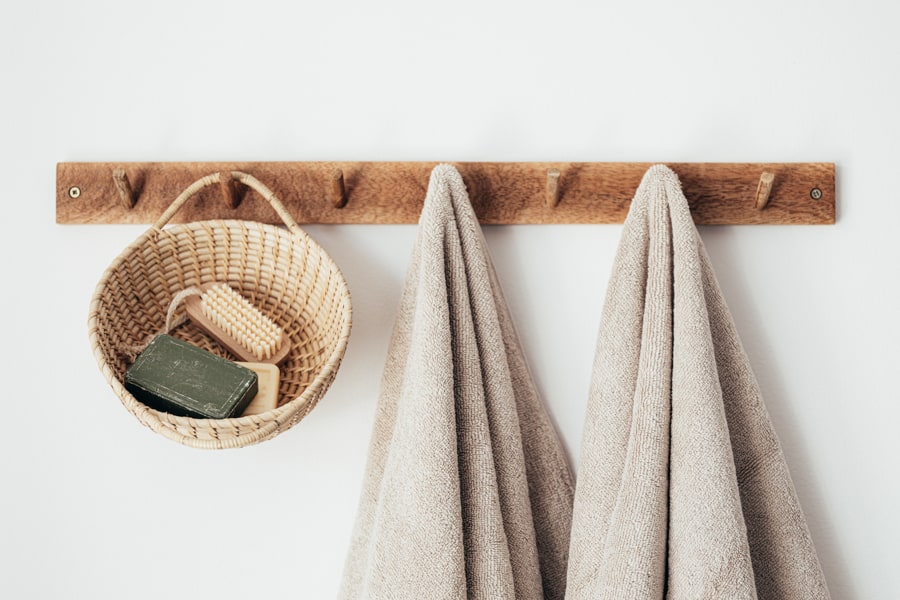

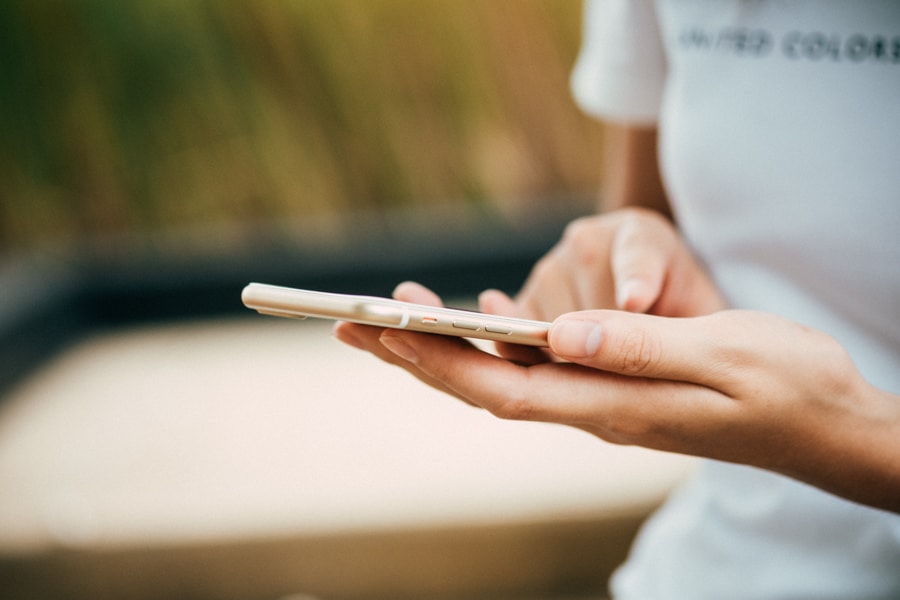
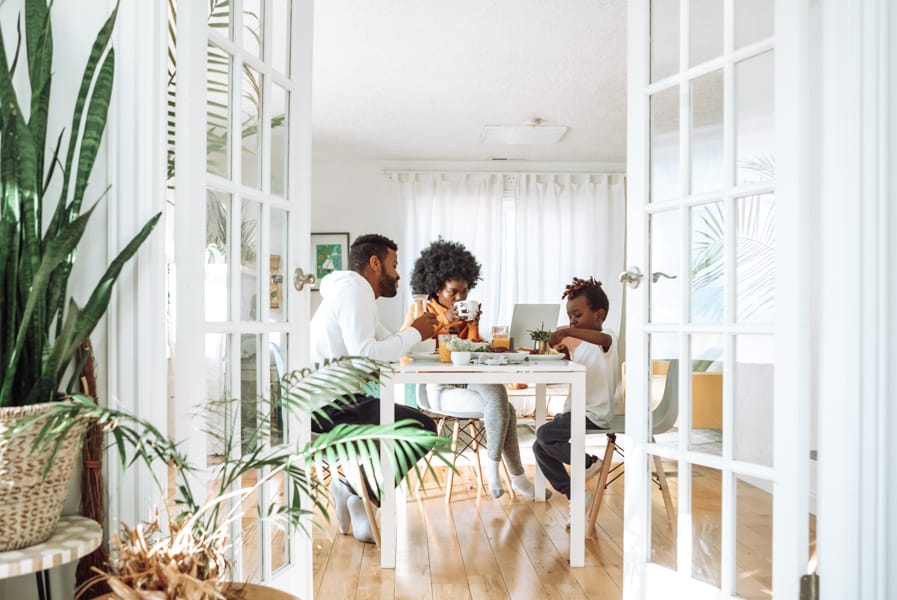
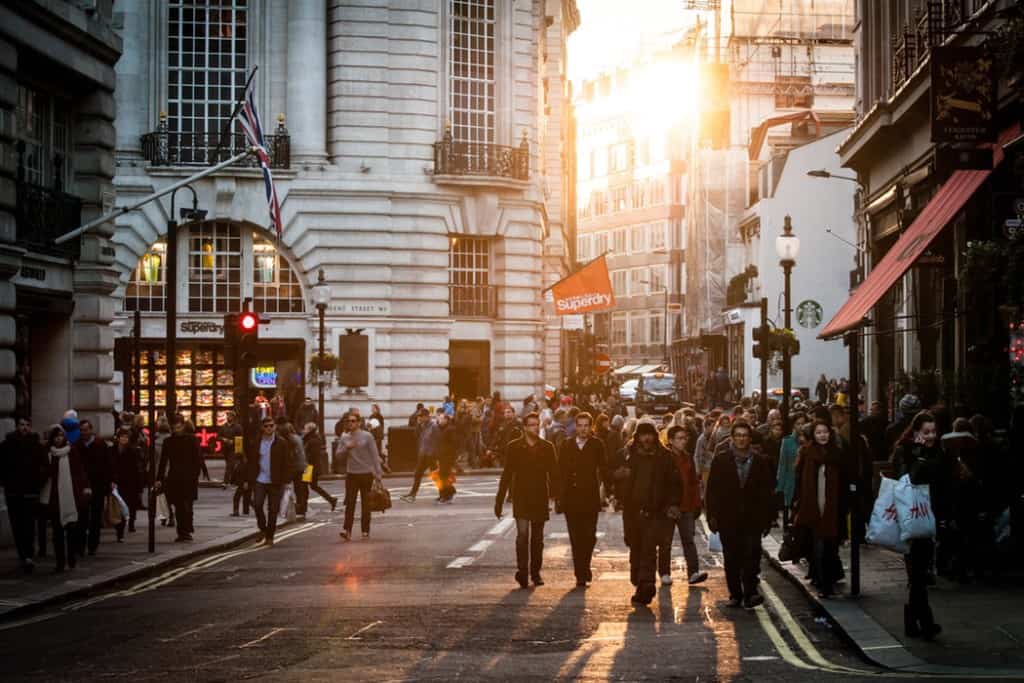
Hi, i really like you’re articles. And the idea of eco-minimalism, im a minimalist alredy for 6 years.
And getting into the eco friendly part and trying to start a no buy year.
But im in need to change my wardrobe now, its funny because the past 6 months i lived only with 4 Shirts, so you could say my wardrobe is ultra minimalistic. But im planning in investing in quality items.
Such a good article ! I really loved it.
I think I’m an eco-minimalism without knowing it 😀
I’m so glad you enjoyed the article. And hopefully, you feel a little better for the efforts you’re making 🙂
Hi Amy. Yup, hair dye is often overlooked. Although, we’ve found some toxic-free ones over the years, like the wonderful folks behind Desert Shadow.
Excellent article. I live with two messy packrats, which causes me a lot of stress and exacerbates my depression. One will be leaving in a couple of months, while the other should be leaving next year. I’m selling the house and moving to an apartment at that point. (I’m also vegan, eight yrs, and neither has any interest in that lifestyle.)
I’m looking forward to reading your past and future articles.
Aw, that’s tough, Lee. Kudos to you for hanging in there. We hope you enjoy the content. It sounds like we have a bit in common!
I loved this article Michael. I have been a minimalist for awhile and I’m starting to think about how I can make more eco friendly choices. My main hang up is that I don’t want to make it an issue with the people I live with though they do compost and recycle and reuse already.
You inspired me to make a few small changes that could make a big impact.
I’m happy that as a minimalist I have already contributed to the health of the planet by stopping mindless consumption and encouraging others to do the same but I know I can do more!
Hi Jessalynn—I’m glad you enjoyed the read.
Yeah, eco-living can get a little delicate when living with others, but it’s awesome that everyone is already taking sustainable steps. Thanks for taking the time to comment.